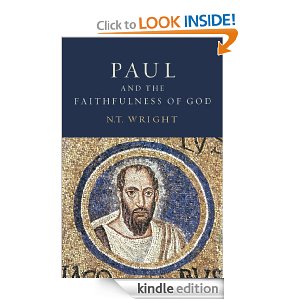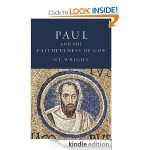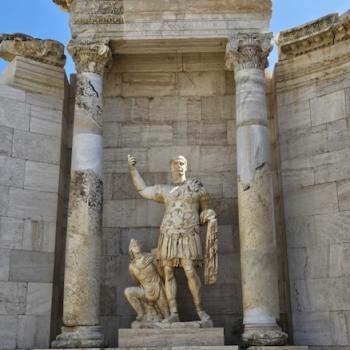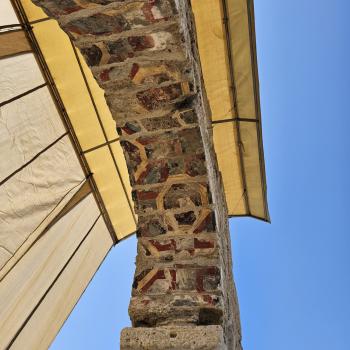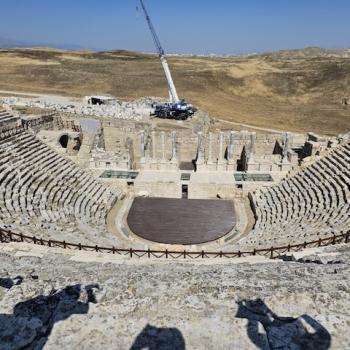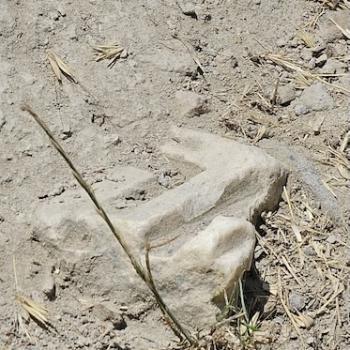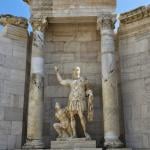I’ve finally arrived at the Pauline portion of Tom’s opus, and something immediately struck me. I don’t know if you readers are film watchers, but you might enjoy Monuments Men, the story of the desperate attempt to rescue the art stolen by Hitler from the Louvre and elsewhere. There is a great line in the movie that goes something like this— “if you burn a person’s fields, or house, or steal their clothes, that’s one thing. They can recover from that. But if you steal their history, the very expression of their soul, then you may have destroyed them altogether”.
What prompted me to share that here is Tom’s discussion on pp. 353ff. Symbol and praxis….. or as we might say the outward and visible signs of an inward and spiritual grace…. And then it occurred to me that when a church like ours develops not merely amnesia as to who it is, but becomes Biblically illiterate so it doesn’t even know its own story, well…… this is bad in seven languages.
Tom begins this pivotal chapter by stressing that “theology itself plays a new symbolic role in Paul’s worldview.” (p. 352). And so “theology as a task would be a new challenge for a zealous second-Temple Jew, for whom the basic beliefs were assumed.” His point is not merely that orthopraxy was the focus of early Judaism, which it was, but that theology as a set of beliefs about monotheism, election, eschatology etc. surfaces as something overt, discussed debated, rather than mostly assumed. This is not to say that Paul was an academic who spent most of his time in a study or even in thought. To the contrary, he spent most of his time on the practical tasks of evangelism and discipleship, church planting and church managing, traveling hither and yon to get it done. One of the problems with dealing with Paul purely on the basis of the literary residue, is that we get a lopsided view of what his day to day existence, and even his life was like. One sign of how radical Paul was is what he did do with the major symbols of Judaism, such as the Temple. In his view, the new community of Jesus was the Temple where God’s Spirit dwelt. Or take what he does with boundary rituals, like circumcision, which helped separate Jews from Gentiles. He stresses Christ followers do not need to follow this practice, or for that matter food laws, another boundary defining ritual. This is not to say that there were not boundaries to the Christian community, but they had to do with beliefs and moral behavior patterns. Tom suggests that Jesus himself replaces the Temple as the central symbol, but in fact Paul does not say, as the Beloved Disciple does, that Jesus is the Temple. He says that the community and even the individual believer is the Temple of the Spirit. Tom puts the matter eloquently– “The Redeemer does not now come to Zion but from Zion, going out into the world to ‘gather the nations’ not by their coming to the central symbol of ancient Judaism, by by their becoming the central symbol…of a transformed worldview.” (p. 358). He goes on to stress “the unity of the Messiah’s people has taken the place, within the community-defining symbol-system of the socio-cultural identity of the strict Jew.” (p. 360). Now that Jesus is raised from the dead, heart-circumcision is the proper symbol of covenant membership and faith/faithfulness the badge of membership (see p. 363). Tom argues that God’s covenant with Israel has been renewed on the basis of Jesus’ resurrection.
Here is where a crucial hermeneutical assumption comes to light. Is the new covenant simply a renewal of the old covenant with Israel? Or is it in fact something actually new, which in part explains many of the the dramatic differences between the new covenant and the Mosaic one. I would suggest that Galatians 4 does not allow the conclusion that the new covenant is a renewal of the Mosaic covenant made with Israel. To the contrary, the Mosaic covenant is seen as a temporary covenant between the Abrahamic one and the new one. The new covenant is seen as the fulfillment of the Abrahamic covenant and not the renewal of the Mosaic one. This is a crucial distinction, and one that Reformed approaches to Paul often get wrong.


